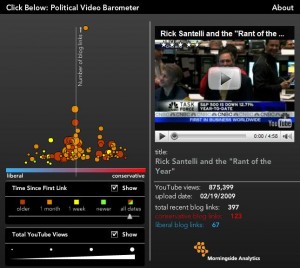The Future of Fact Checking
March 6th, 2009 — Chris Van BurenRemember Jayson Blair, the New York Times “reporter” who fabricated tens of articles by gliding through a loop hole in the reporter’s code of honor? Some established magazines like The New Yorker or The Atlantic can afford to pay fact checkers, but even the Times — whether for reasons of deadline or budget — must rely on reporters to fact-check themselves, taking any heat from the public if they misquote or misrepresent.
Obviously, there is even less impetus or resources to fact-check blogs. In blogging, commentary is so instantaneous that a moment of reflective delay costs its writer timely influence on the cacophonous dialogue of interested voices. Toss in the patina of ideology, opinion, and just plain gossip, which can characterize the blogosphere both left and right, and you have a recipe for old fashioned, low and dirty rumor-mongering.
One need look no farther back than the “Barack Obama is a Muslim” conspiracy on the right (see here) and, these days, the “Rick Santelli is part of massive libertarian astroturf conspiracy” on the left (for background, see here). The blogospheric rumor mill can churn at an alarming pace. But in important ways, it’s not the initial debut of a pernicious internet rumor which poisons national discourse; false claims are often immediately disputed and hashed out in a sort of crowd-sourced wiki factchecker operation.
Rather, the problem is such crowd-led efforts are operationally diffuse. It may take several bloggers from all over the spectrum writing and revising a received idea/rumor/possibility to approximate a verifiable fact. Scouring a host of different blogs, including those ideologically opposed to one’s own position, in the uneven aftermath of some scandalous new piece of blogger cant is sometimes, I fear, too much attention to expect from information technologies already stuffed to the gills with competing headlines.
Falsehoods, rumors, half-stated truths, then, have a tendency to linger in all but the most consistently interested and open minded blogs. Even if Playboy removed the Santelli conspiracy theory article, its ripple effect through the left-of-center echo chamber has likely yet to cease (though Yglesias at least recognized in an update that Playboy’s retraction was problematic), and those who protest the article’s characterization (a group that includes Playboy evidently) seem slow in catching up with the monstrous wave of accusation. As one conservative blogger opined:
Happily facts have won over Playboy forcing the mag to pull down the fallacious story, which is all well and good. But the problem is we now have hundreds perhaps thousands of left-wing DailyKosers and such all imagining they know the real story, the one that corresponds to the fake Playboy tale.
I suppose one could say the same for newspaper corrections, which are not dramatically featured either; still, I wonder whether the web’s increased decentralization of media authority, in many ways a good and important development, will weaken our ability to fact-check even basic news stories. As abstract as that seems, the question is of vital importance, because without stronger sources of factual reliability, the internet will see its share of Jayson Blairs, real astro-turfers, charlatans and fools.



 By now, have seen the YouTube
By now, have seen the YouTube 
 Click Here
Click Here